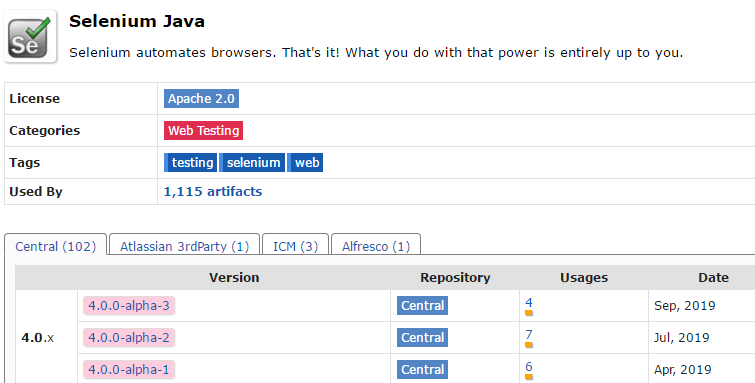Selenium is the most widely used open-source tool for automating testing suite for web applications across a range of platforms and browsers.
The significant advantages of using Selenium include:
No licensing costs
Supports multiple programming languages like Java, Python, Ruby, PHP, Perl, and C#
Easily integrate it with unit test framework for generating reports and managing test cases
The alpha version of Selenium was released on April 28, 2019.
We have got our hands on the Alpha version of Selenium 4. For those who are wondering what the new features and capabilities that are being brought and how it will impact and improve your daily work, then please read on.
New Features Promised in Selenium 4
Selenium IDE TNG
The record and playback feature of Selenium is taken to a whole new level with advanced and rich features. Previously Selenium only used to support Chrome. But with new version a plugin will allow you to run Selenium on any browser. Also, a user can now declare their own locator strategy.
- There is also a new CLI runner which is based on Node JS, instead of the old HTML based CLI runner.
- It now can execute test cases in parallel and provide more information.
- The new IDE runner is completely based on WebDriver.
WebDriver API Became W3C Standardized
If you are an automation professional you would already know that usage of the WebDriver is not restricted to Selenium. It is also widely used in Appium and iOS drivers.
The latest version of Selenium thus comes with W3C standard which would make it compatible with the implementation of the WebDriver across multiple platforms.
Improved Selenium Grid
If you have worked with Selenium earlier, you must have faced the configuration challenges and the issues that arise when you try to set it up for the first time. Selenium Grid version 4 makes you free from the installation worries. The 2 main elements of the new Selenium Grid are:
Node: A test machine on which you can execute the test cases.
Hub: The server acting as a central point to control all other machines available in the network. Selenium Grid has only one hub whose purpose is to allocate the test case execution to a specific node.
Till version 3, testers faced a lot of difficulties while connecting hub with nodes. But in new version Selenium 4, The moment you start the Selenium Grid, it will act as both node and hub. The process is much easier.
Better Observability
Another important update in Selenium 4 is with respect to the logging, debugging, observations, hooks, etc.
With the new and improved analysis feature, the tester would be equipped with much more data to share with the development team for fixing an issue.
Much Detailed Documentation
Documentation is very important for any project to succeed. Since the release of Selenium 2, the documents were not updated for years. Meaning, anyone willing to learn Selenium had to rely on the old tutorials, in which many of the features changed in version 3.
With Selenium 4, Selenium HQ promised to deliver a refreshed and updated documentation which is the most anticipated update among test automation engineers.
How to Get Your Hands-on Selenium 4 Alpha?
Although Selenium 4 Alpha is not officially released at the website of Selenium, you can still get it from MVN Repository .

However, it should be kept in mind that the Alpha version of Selenium 4 is still in the testing phase and there may be some instability. You can use it if you want to get hands-on with the new features but if you want to implement them in your project, our suggestion is to wait for some time until a stable version is released.
Do let us know if you want to know our best practices using Selenium ?.



